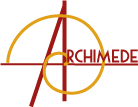Harpocrate au chien et les cadavres de Qasr ‛Allam. Perspectives sur le statut rituel des inhumations animales dans l’Égypte ancienne
Auteurs
Frédéric COLIN , Université de Strasbourg, UMR 7044 Archimède. frederic.colin(at)misha.fr
Frédéric ADAM, INRAP, UMR 7044 Archimède. frederic.adam(at)inrap.fr
Ivana PRANJIC, missionnaire de l’UMR 7044 Archimède. ivanapran(at)hotmail.fr
Télécharger le texte complet - Download the full text
RÉSUMÉS : français - english CITER CET ARTICLE : réf. électronique
Résumé
Le cimetière de Qasr ‘Allam (oasis de Bahariya, Égypte, fin de la Basse Époque / début de l’époque ptolémaïque) comporte des inhumations collectives où l’espace funéraire est partagé entre des humains et des animaux. La taphonomie révèle des rapprochements réguliers de corps susceptibles de remettre en question la lecture intuitive qui tendrait à interpréter les dépouilles animales comme des objets d’accompagnement des défunts humains. En cherchant à résoudre la question du statut rituel des dépôts animaux anatomiquement intègres dans les gisements funéraires de l’Égypte ancienne, cet article combine des analyses taphonomiques, ostéologiques et philologiques en vue de proposer une interprétation des gestes parfois étranges des fossoyeurs. L’étude d’un corpus textuel de l’Ancien Empire à la période ptolémaïque (inscriptions hiéroglyphiques, dossiers grecs et démotiques) amène notamment à revoir les typologies traditionnelles de pratiques réputées bien connues en égyptologie, mais pour lesquelles une démarche pluridisciplinaire, renouvelée grâce aux données récentes de l’archéologie, permet de suggérer de nouvelles perspectives. Tout en comparant les points de vue émique et étique proposés par les différentes disciplines en interaction, la conclusion propose une hypothèse d’interprétation des gestes rituels attestés à Qasr ‘Allam et sur quelques sites de la vallée du Nil.
Mots-clés : Archéologie égyptienne, épigraphie hiéroglyphique, papyrologie grecque, papyrologie démotique, archéologie funéraire, taphonomie, archéozoologie, anthropologie religieuse, inhumation animale, désert occidental d’Égypte, Bahariya.
Abstract
The cemetery of Qasr ‘Allam (oasis of Bahariya, Egypt, end of the Late Period / Beginning of Ptolemaic Period) contains collective burials where the funeral space is occupied simultaneously by dead people and animals. The fact that some human and animal bodies are regularly burden together is susceptible to question the intuitive reading which would tend to interpret animal remains as offerings or artifacts accompanying the human deceased. In order to solve the question of the ritual status of animal deposits when animal skeletons are anatomicallycomplete, this paper combines taphonomical, osteological and philological analyses to interpret some strange gestures of the gravediggers. By studying a textual corpus from the Old Kingdom to the Ptolemaic Period (hieroglyphic epigraphy, Greek and demotic papyrology) and thanks to recent archaeological data considered with a multidisciplinary approach, we revise some traditional typologies that seemed well established in the field of Egyptology. While comparing the emic and etic point of view of the various combined sciences, the conclusion builds an hypothesis to interpret the ritual gestures occurring in Qasr ‘Allam and on some sites of the Nile valley.
Keywords: Egyptian Archaeology, Hieroglyphic Epigraphy, Greek Papyrology, Demotic Papyrology, Funerary Archaeology, Archaeozoology, Religious Anthropology, Animal Burial, Western Egyptian Desert, Bahariya.
Citer cet article
Fr. COLIN, Fr. ADAM, I. PRANJIC, « Harpocrate au chien et les cadavres de Qasr ‛Allam. Perspectives sur le statut rituel des inhumations animales dans l’Égypte ancienne », Archimède. Archéologie et histoireancienne [En ligne] 1, 2014, p. 32-63. Mis en ligne le 05-11-2014.
URL: archimede.unistra.fr/fileadmin/upload/DUN/archimede/Revue_Archimede_RAHA/Numero_1/06_Archimede_N1_COLIN_ADAM_PRANJIC.pdf
Droits d'auteur
Tous droits réservés




